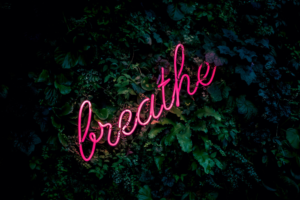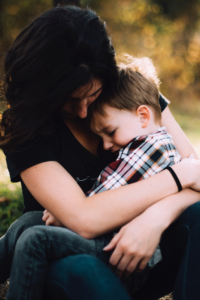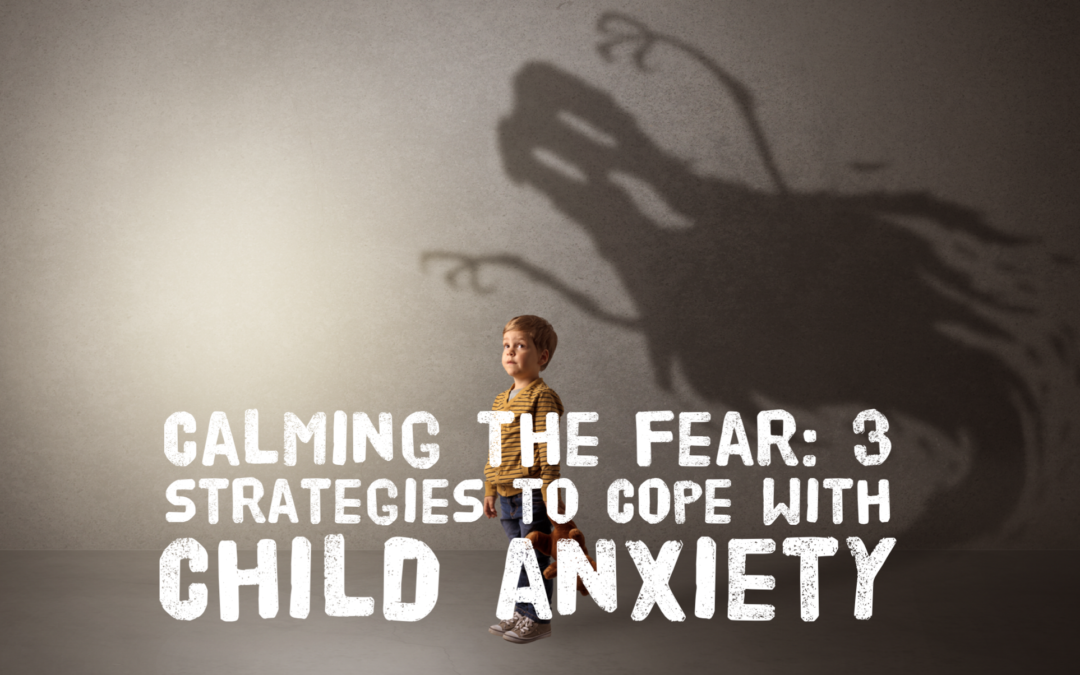There are times in each child’s life, despite all of our best parenting efforts, that they will encounter major obstacles to their well being. For some it might be physical health, for others it might be academics, and for others it might be emotional or psychological. For my daughter Boo, it’s anxiety.
Anxiety, as with most mental health problems, is actually normal and adaptive in small doses. We all experience a certain amount of anxiety, as this is an emotion that serves to protect us from danger. So anxiety in and of itself is not a problem. It only becomes a problem when it starts to interfere with your life. This occurs when your body becomes over-sensitive to danger in the environment and starts to interpret things as dangerous when they really are not.
For example, most of us don’t go walking around life worrying about whether there’s going to be a fire today. Sure, some of us may put in the effort to create a safety plan and have a “just in case” bag packed. But once that’s done, we consider ourselves prepared and stop thinking about it… Unless the fire alarm goes off, and then that anxiety courses through our body and helps us react quickly to determine the appropriate response. And if it’s a false alarm, most of us can quickly convince ourselves that it was just a false alarm and there is no danger present.
But for kids and adults with anxiety, it’s kind of like having fire alarms go off all day long, every day. And even when those alarms are false (which, most of the time they are), it is VERY difficult to convince themselves that they are safe and there is no danger.

Can you imagine walking around life feeling like you’re constantly in a life-or-death situation? How exhausting!!!
But for Boo, this is her predominant reality. Anxiety is one of her constant companions. And so, it’s one of my constant companions too as her parent. We face anxiety when Boo needs to use the public restroom, when she encounters new people, on play equipment that is too high, or upon hearing noises that are too loud. She feels anxious when I leave her sight for even a few seconds or when a dog becomes too close to her. Anxiety follows when she enters a house she’s never visited before, when there’s too many people at the park, or when the doorbell rings.
Anxiety is a major part of our lives, clearly, and so we’ve had to come up with methods to get us through the day. Here’s some strategies that have helped, and I hope they can help your family too:
1. Acknowledge the emotion.
It may not make sense to you why your child is feeling anxious, but the anxiety is very real for them. Anxiety is not just mental, it is also physiological. There’s the racing heart, the shortness of breath, the hyperventilating, the sweaty palms, the butterflies in the stomach, the dizziness, and the muscle tension, just to name some of the ways that anxiety manifests in the body. And your child feels that.
I’m sure there have been times in your life where you’ve felt something, and someone told you more or less that you shouldn’t feel that way. Not only is this not a helpful response, but I’m sure it causes even more emotions inside. Maybe frustration that this person clearly doesn’t get it. Or maybe self-doubt because your body isn’t behaving the way someone else thinks it should. Or maybe just confusion because you don’t know what to feel now.

This is precisely why the first step in helping your anxious child is to acknowledge that their anxiety is real. If this is new to you, here are a few common responses to try and avoid:
- There’s nothing to be afraid of
- Don’t be anxious (or scared or worried or nervous, etc)
- It’s all in your head
- You’re fine
- What’s your problem?
Even though these statements may be true, they don’t respect the feeling your child is experiencing. And we want your child to feel understood first before we do anything else. So here are a few ways to acknowledge the emotions:
- What are you feeling right now?
- It looks like you’re feeling anxious, is that right?.
- Tell me more about what’s making you feel nervous.
- I’m wondering if your worried about ____________?
There are a million other ways to do this, so feel free to put it into your own words. But if you’re feeling stuck, verbalizing your observations is a good place to start.
2. Help your child relax their body
Probably the most effective way at getting the body to relax is through deep breathing. Although it may seem way too simple, deep breathing works quickly and thoroughly to counteract all those physiological symptoms that were triggered by anxiety.
When we get anxious, our breathing starts to shorten and at times we may even get to the point of hyperventilation. When hyperventilation occurs, we take short little breaths in, but almost forget to exhale. Children can get to that point quite easily in fact. This form of breathing disrupts the level of oxygen in the body, which in itself will trigger a stress response.
But when we intentionally take a deep breath, all the cells in our body gain a big healthy dose of oxygen. Deep breathing also activates the part of the nervous system that is responsible for bringing our body back to a state of calm. It slows our heart rate and lowers blood pressure, and helps our body return to the behind-the-scenes activities that keep it working properly.

Helping your child take deep breaths when they are anxious can clearly be helpful, but this can be a tricky skill to teach children. Check out this link if you need some creative adaptations for kids (https://imperfectfamilies.com/how-to-teach-your-child-to-take-a-deep-breath/).
3. Use Yourself to Regulate Your Child
One of the reasons children emulate their parents’ coping mechanisms over time is because parents essentially have to cope for their children in the beginning of their lives.
Parents reach out and pull their babies into their cocoon to rock them when they cry, sing lullabies when they’re tired, or entertain them when they’re bored. We help our children regulate their bodies physiologically as well as emotionally. In fact, these two things are often intertwined.
When our children are cold, we pull them close to us and allow our own body heat to warm them. In doing so, this helps them feel happy and loved (Even now I can picture that satisfied little grin on Boo’s face when I pull her onto my lap and snuggle with her!). When they fall and hurt themselves, we intuitively hug them, which allows our heart rate to moderate theirs. This assures them the danger is over and helps them to feel safe. When they feel so mad that they throw their little bodies on the floor in a fit of rage, our slow breaths and calm voice guide their own breath to slow down, which in turn reduces the intensity of their emotion.

Given our influence on our child’s emotions and physiology, we are an immensely powerful tool in helping them regulate anxiety. In fact, we are so powerful that often times it’s less important what we say and more important how we say it or what we do.
Offer affection. Affection is a game changer in helping everyone cope with intense emotions. Not only does it offer the relational closeness that makes us feel loved and cared for, but it provides a unique vantage point for our children to feel our slower heart rate, our cooler temperature, and our calm breathing. And now we know that all of those things are important in helping them regulate their own bodies.
Move slowly. As I mentioned earlier, when we are anxious, it’s because we perceive something to be threatening in our environment. And in a threatening scenario, everyone will respond in one of three ways: fight, flight, or freeze. Or in other words, attack the threat head on, run away from the threat, or play dead and hope the threat doesn’t notice you. In each of these situations, moving fast is essential (this is more apparent in the fight and flight responses, but quick movement is equally important in the freeze response when the person needs to quickly determine that not moving is most likely to keep them safe).
Thus any slowed behavior on your part is going to contradict your child’s perception of danger. Because if there truly was something scary happening, you would likely be reacting very quickly. And if instead you’re moving about very calmly and slowly, this sends information to their brain that encourages them to re-evaluate.
While this probably isn’t exactly conscious, your calm demeanor is going to raise some question marks for your child, such as “I’m terrified that the water is going to swallow me whole. But mama isn’t running from it. Hmmm, I wonder if it really is going to hurt me.”

Speak slowly. In the same way that your slowed movement is important, your slowed speech is also going to help regulate your child’s anxiety. It’s another cue that contradicts their perception of danger. And the more cues that do that, the harder it is to maintain their fear.
So pause. Consider what you want to say, and then say it in a calm and casual way. It can be easy to get pulled into our child’s intensity, but remember that you are the anchor. You need to set the pace for your child.
Monitor your facial expressions. When we are afraid, we are keenly aware of subtle details in our environment. We are looking for anything that confirms our state of anxiety. Because of this, your facial expressions and overall body language are important. If you’re face shows worry for your child, your child is going to attribute that worry to whatever they already feel scared about. And if your face shows anger or disapproval, it is going to just add to the mix of emotions your child is already struggling to manage.
I have found that a neutral expression is the most helpful. So I have become very aware of what my “neutral face” looks like, and I will consciously adopt that face when I see signs of Boo’s anxiety. This way, when we start to talk through her anxiety, my facial expressions and body language don’t add anything further and we can focus solely on what is happening internally for her.

Take deep breaths. And finally, remember to take deep breaths. It can be overwhelming at times to tackle a child’s anxiety. But taking deep breaths will help you regulate your own emotions, and will serve as a reminder for your child to breath.
When I’m not successful at engaging Boo in a deep breathing exercise, I will just take very overt deep breaths myself, which serves as a reminder to her, “Oh, yah, take a breath.”
Childhood anxiety is unfortunately not something that goes away quickly. It requires consistent follow through on interventions that help to create new paths in your child’s brain… paths that are better able to interpret things accurately. But as with the paths in a forest, these new paths will require much more effort, and sometimes it will be easier to go down the well-trampled path of anxiety. But with your support, and now some deeper understanding, you can help your child to keep choosing the new, alternative paths for understanding their environment. And eventually those paths will become worn in and your child will be able to use these tools independently.
The skills I talked about today are just a few of the simple, but important tools in my toolbox for managing anxiety. If you’re ready to help your child learn how to overcome their anxiety, check out How to Take on Your Child’s Anxiety… And Win.
____
Dana Basu, PsyD is a licensed clinical psychologist at EverGROW therapy and founder of Everything But Crazy, an online resource for parents. She provides individual therapy, support groups, and online resources for parents in Orange County and throughout the state of California via online therapy. She specializes in working with the highly sensitive person and people with difficult childhood experiences, trauma, parenting stress, and chronic guilt.


This article is amazing! I’m going to start practicing my “neutral face” asap!
Thanks Katie!! I’ve found the “neutral face” works well with husbands too 😉
I love, love this Dana! Well-written and insightful. I will be practicing this with my nieces.
Thanks so much Eve! I hope it helps. And more to come on anxiety 🙂